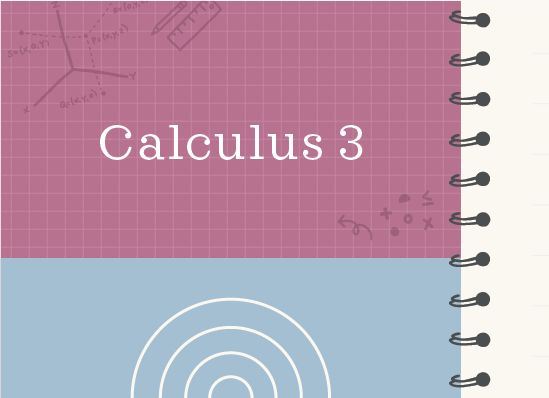Finding the vector function for the curve of intersection of two surfaces
The intersection of two surfaces will be a curve, and we can find the vector equation of that curve
When two three-dimensional surfaces intersect each other, the intersection is a curve. We can find the vector equation of that intersection curve using these steps:
Hi! I'm krista.
I create online courses to help you rock your math class. Read more.
Set the curves equal to each other and solve for one of the remaining variables in terms of the other
Define each of the variables in terms of the parameter ???t??? to get parametric equations for the intersection curve,
???x=r(t)_1???
???y=r(t)_2???
???z=r(t)_3???
Generate the vector function that describes the intersection curve using the formulas
???r(t)=r(t)_1\bold i+r(t)_2\bold j+r(t)_3\bold k???
???r(t)=\langle r(t)_1,r(t)_2,r(t)_3\rangle???
Process for finding the vector function that gives the curve of intersection of two surfaces
Take the course
Want to learn more about Calculus 3? I have a step-by-step course for that. :)
Vector function for the curve of intersection of an ellipsoid and a plane
Example
Find the vector function for the curve of intersection of the surfaces.
The ellipsoid ???z=\sqrt{1+x^2-y^2}???
The plane ???z=2+x???
Since both of the curves have ???z??? on the left-hand side, we can set the right-hand sides equal to one another and solve for one variable of the remaining variables in terms of the other.
???\sqrt{1+x^2-y^2}=2+x???
???1+x^2-y^2=(2+x)^2???
???1+x^2-y^2=4+4x+x^2???
???-3-y^2=4x???
???x=-\frac34-\frac14y^2???
We want to define each variable in terms of the parameter ???t???, so we’ll set ???y=t???.
???x=-\frac34-\frac14t^2???
To find ???z??? in terms of ???t???, we’ll plug ???x??? in terms of ???t??? into ???z=2+x???.
???z=2+x???
???z=2-\frac34-\frac14t^2???
???z=\frac54-\frac14t^2???
Now we have parametric equations for the curve of intersection, defined by
???x=-\frac34-\frac14t^2???
???y=t???
???z=\frac54-\frac14t^2???
With the parametric equations in hand, we can plug each of them into the formula for the vector function.
With the parametric equations in hand, we can plug each of them into the formula for the vector function.
???r(t)=r(t)_1\bold i+r(t)_2\bold j+r(t)_3\bold k???
???r(t)=\left(-\frac34-\frac14t^2\right)\bold i+t\bold j+\left(\frac54-\frac14t^2\right)\bold k???
This is the vector function for the curve of intersection. You can also write it as
???r(t)=\left\langle-\frac34-\frac14t^2,t,\frac54-\frac14t^2\right\rangle???






